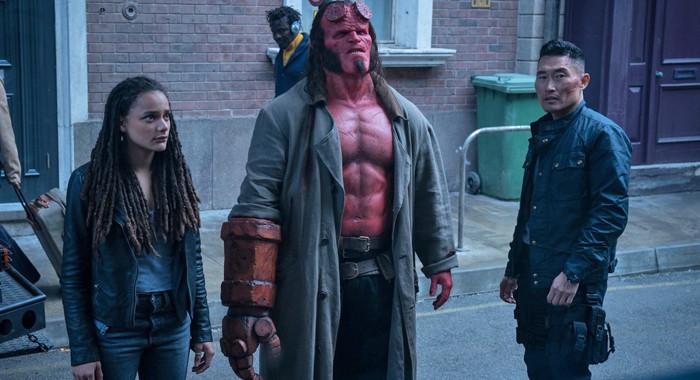Movie Review: Hellboy demonstrates the dangers of a lack of creative freedom
April 16, 2019
In the 2000s, the comic book character known as Hellboy saw two film adaptations in an aborted franchise, and ten years later, the potential of a new franchise with this reboot is about as promising as Universal’s disastrous 2017 attempt with “The Mummy.”
The plot of “Hellboy” follows the titular character, the son of the Devil, who is recruited by a paranormal task force to hunt down monsters and protect humanity. However, Hellboy faces an internal conflict when a witch known as Nimue the Queen of Blood is resurrected with the goal of using the protagonist to usher in the apocalypse and allow supernatural creatures to reign over the Earth.
On the surface, “Hellboy” has an interesting premise that could have potentially led to an in-depth story about nature vs. nurture in regards to the main character and his work as a paranormal peacekeeper. However, due to significant lack of creative control for director Neil Marshall, the film’s idea is buried underneath loose plot threads that are poorly connected through padded-out scenes with unlikable characters that seem to only serve as a way to lead up to the film’s grotesque action sequences, which in themselves are not as exciting as one would think.
The performances in the film, excluding David Harbour as the demonic protagonist, range from being incredibly bland to obnoxious levels of camp, with no middle ground to be found. Harbour ultimately succeeds at portraying a charismatic hero who is not only humorous but has levels of emotion beyond his monstrous appearance. Unfortunately, Harbour was given the task of following the act of beloved actor Ron Perlman, who not only succeeded more in likability but was also genuinely intimidating at points.
When one evaluates the film’s presentation, one will get the impression that those who visualized the film were overly ambitious in regards to trying to exceed the limitations of the budget of the film. The film suffers tremendously from an overdose of computer-generated effects that lead to dull action sequences and would honestly fit better in a video game than a film released in 2019. This also extends to the costume department with Hellboy himself, whose appearance looks more akin to a Halloween mask that is not only poorly constructed in allowing facial expressions but looks as if it is constantly tearing, which is a testament to the difficulty of Harbour having to rely more on inflexion that physical acting.
When assessing the film as a whole, a root problem can be found: the film’s inconsistent tone. The poorly paced plot, which has massive holes in terms of character motivations being underdeveloped and the villainess having no personality whatsoever, are played to a frustrating level of seriousness. However, the often juvenile dialogue between Hellboy and the other wooden characters creatives an atmosphere impossible to take seriously, which ultimately creates a film that is in direct conflict with itself.
“Hellboy” is not a film that is recommended in the slightest. It is an ultimately lifeless product that is bogged down by obvious studio interference that sought to create a film which has one selling point: Mindless, gore-filled action, which even in that context, is unremarkable. If one is interested in decent films based on the character, they should look no further than the two released by acclaimed director Guillermo del Toro in the 2000s, but should not waste their money on this mess of a film.











